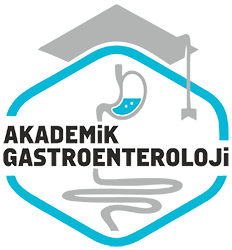Nisan 2010
Özofagusun 24 saatlik pH-metre izlemine hastanin vücut kitle indeksinin etkisi var mi?
Does body mass index have any impact on 24-hour esophageal pH monitoring results?
- Ana Sayfa
- Sayılar
- Nisan 2010
- Özofagusun 24 saatlik pH-metre izlemine hastanin vücut kitle indeksinin etkisi var mi?...
Özet
Giriş ve Amaç: Gastroözefageal reflü hastalığı ve obezite önemli Sağlık problemlerindendir. Obezite ve gastroözofageal reflü hastalığı arasındaki ilişki konusunda yapılan çalışma sonuçları çeliskilidir. Özofagusun 24 saatlik pH-izlemi gastroözofageal reflü hastalığı tanısında kullanılan yüksek spesifiteye sahip en objektif tanı yöntemidir. Bu Çalışmamızi, gastroözofageal reflü hastalığı nedeniyle pH-metre yapılan hastalarimizda vücut kitle indeksi ile pH-metre verileri arasında bir ilişki olup olmadigini araştırmak için retrospektif olarak planladik. Gereç ve Yöntem: Özofagusun 24 saatlik pH-metre izleminin yapildigi 207 hasta değerlendirildi. Hastaların demografik verileri ve pH-metre kayitlari incelendi. Vücut kitle indeksi ile 24 saatlik özofageal pH ölçüm parametreleri arasında korelasyon analizi yapildi. Ardindan hastalar Dünya Sağlık Örgütü'nün vücut kitle indeksi kategorilerine göre gruplara ayrıldı ve pH-izlem parametreleri açısından gruplar arasında fark olup olmadigi arastirildi. Bulgular: Hastaların 93 tanesi erkek (%45), 114 tanesi kadındi (%55) ve yaş ortalamaları 42 ± 12 yıldi (18-74 yaş arasında). Vücut kitle indeksi <25 olan hasta grubu ile ≥25 olan hasta grubu karsilastirildiginda özofageal pH ölçüm parametrelerinden reflü sayisi, uzun reflü sayisi, pH<4 zaman yüzdesi ve total DeMeester skoru vücut kitle indeksi ≥25 olan grupta istatiksiksel olarak anlamli derecede fazla bulundu. Sonuç: Asit reflü sayisi, uzun asit reflü sayisi, pH<4 fraksiyone zaman ve total pH-metre skoru normal kilolu hasta grubunda fazla kilolu ve obez hastalardan anlamli olarak düşük bulundu.
Abstract
Background and Aims: Gastroesophageal reflux disease and obesity are increasingly important health problems. The literature on the relationship between gastroesophageal reflux disease and obesity is conflicting. The most objective method of defining gastroesophageal reflux disease is 24-hour esophageal pH monitoring, which has a high specificity. We planned this retrospective study to investigate if there is a relationship between body mass index (BMI) and pH monitoring data in patients with gastroesophageal reflux disease. Materials and Methods: Data of 207 patients who underwent 24-hour esophageal pH monitoring were analyzed. The demographic characteristics and pH monitoring records were evaluated. The correlation between body mass index and 24-hour esophageal pH monitoring parameters was investigated. The World Health Organization categories of body mass index were used to group the patients. The esophageal 24-hour pH monitoring parameters were compared between body mass index groups. Results: Of the 207 patients, 93 were male (45%), 114 were female (55%) and the mean age was 42 ± 12 (range: 18-74 years). Patients with body mass index <25 were compared with the group of patients with body mass index ≥25. Statistically significant increases in the number of reflux episodes, number of long reflux episodes, fraction time of pH <4, and total De Meester score were observed with body mass index ≥25. Conclusions: The number of reflux episodes and long reflux episodes, fraction time of pH<4 and total De Meester score were statistically lower in patients with normal body mass index than in overweight and obese patients.



